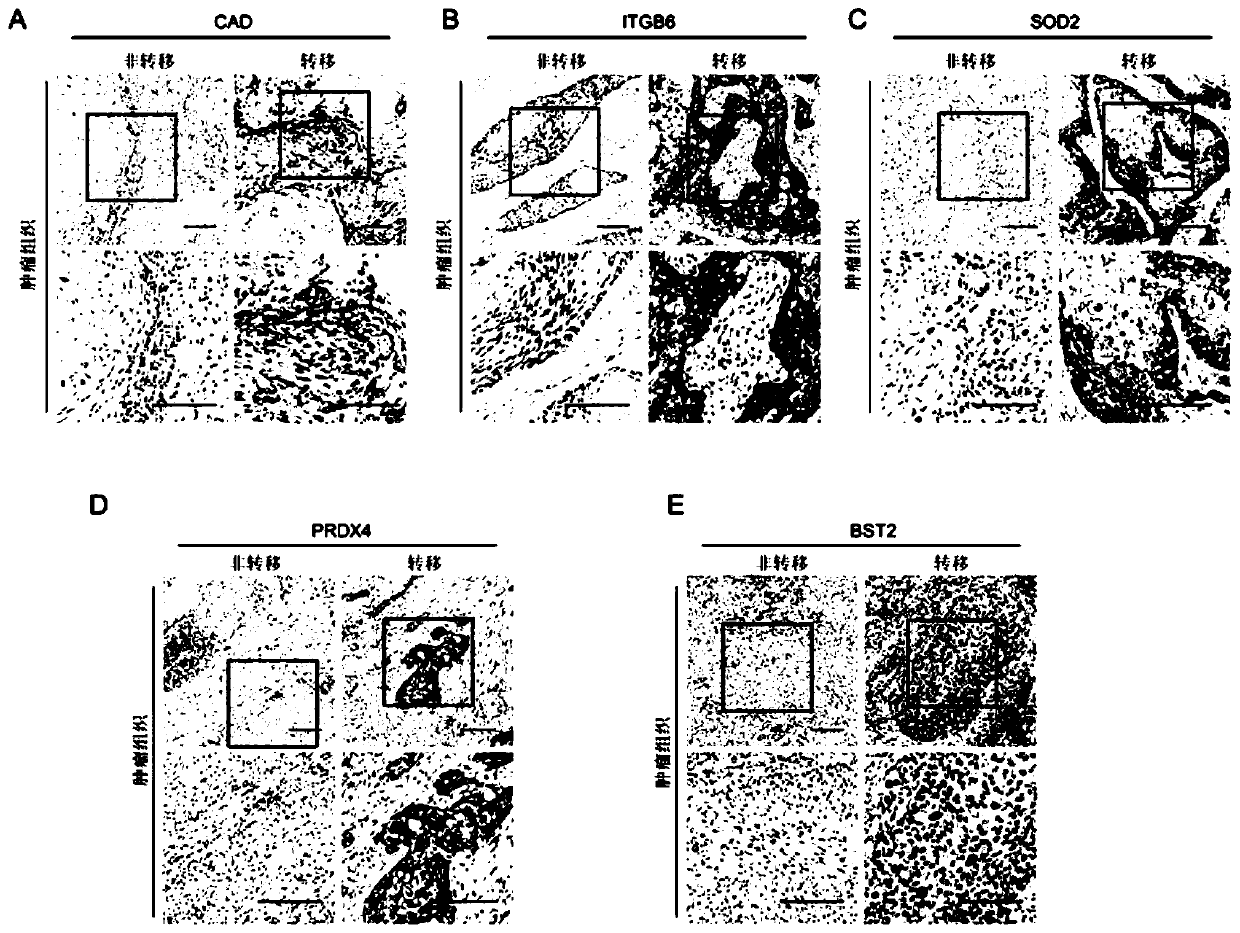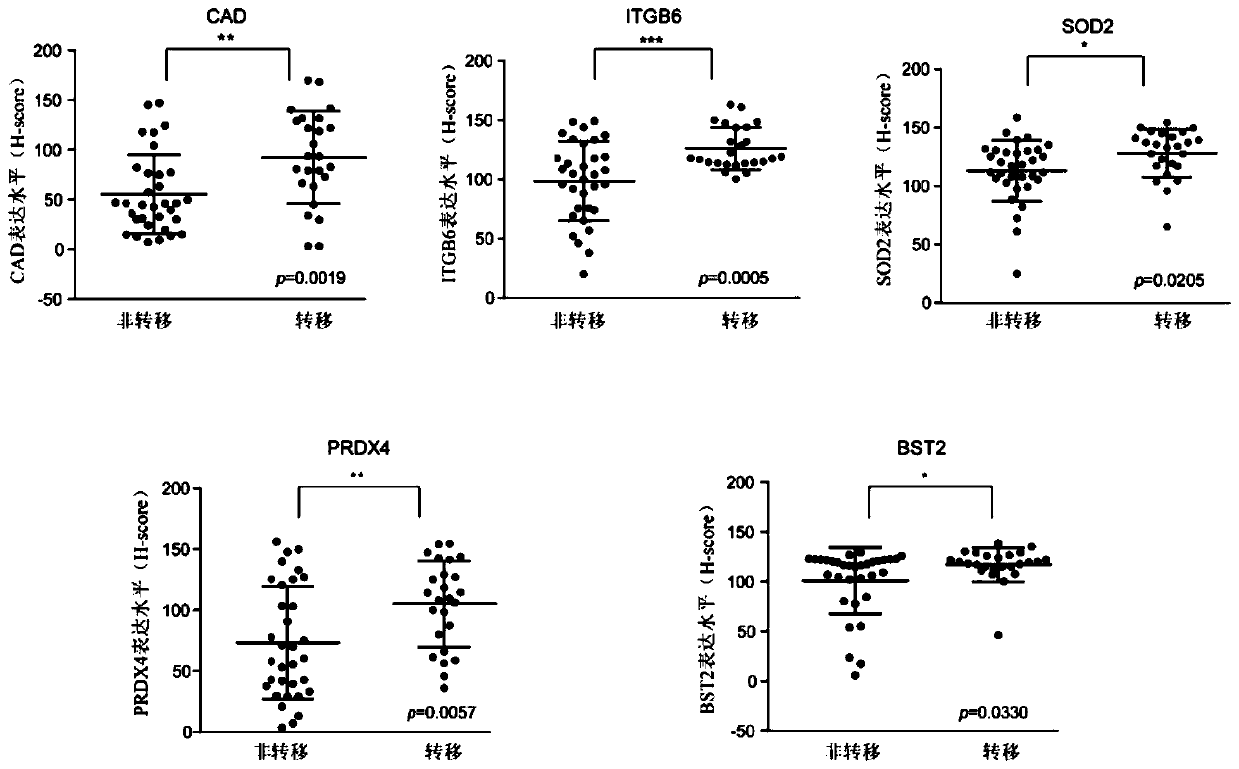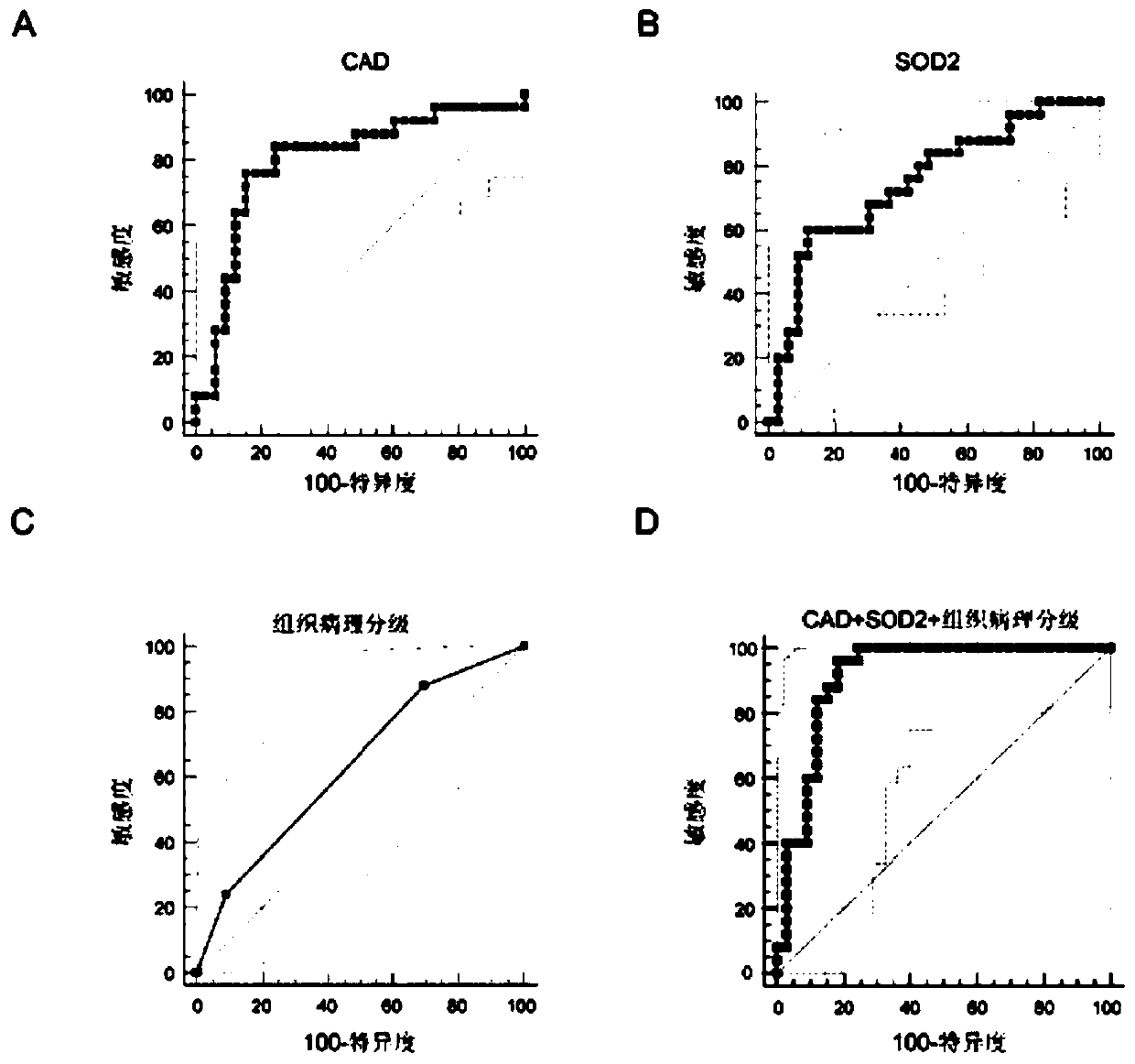Composition as well as kit, biochip and application thereof
A biochip and composition technology, applied in the field of tumor molecular biology, can solve the problems of different effects, failure to consider the response diversity of individual treatments, and inability to accurately predict the lymph node metastasis of oral squamous cell carcinoma.
- Summary
- Abstract
- Description
- Claims
- Application Information
AI Technical Summary
Problems solved by technology
Method used
Image
Examples
Embodiment 1
[0049] The screening of embodiment 1 composition
[0050] Through the analysis of the protein profiles related to lymph node metastasis of oral squamous cell carcinoma in the literature, and the establishment of protein screening criteria for lymph node metastasis of oral squamous cell carcinoma, related proteins were included in candidate molecular markers. Among them, the criteria for protein screening are: ① Proteins with different expression abundance in OSCC lymph node metastasis and non-metastatic OSCC (P<0.05); ② Proteins with clinically significant differences in prognosis of patients (P<0.05); ③In the protein database, the proteins positively expressed in tumor tissues, and ④The proteins that have been verified in previous studies and are related to the metastasis of oral squamous cell carcinoma. The expression levels of related proteins in 58 metastatic and non-metastatic tumor tissues of oral squamous cell carcinoma were analyzed by immunohistochemical technique, an...
Embodiment 2
[0086] Example 2 Verification of the prediction model
[0087] In order to ensure the accuracy of the prediction of OSCC metastasis, the prediction model was further verified with 101 OSCC tissue microarrays. The tissue chips of 101 cases of oral squamous cell carcinoma were obtained from tumor tissues excised from patients with oral squamous cell carcinoma in the Ninth People's Hospital Affiliated to Shanghai Jiaotong University School of Medicine, without radiation therapy and chemotherapy before surgery. We statistically analyzed the histopathological grades of 101 metastatic and non-metastatic tumor tissues in the tissue chip, and used immunohistochemical methods (the same method as in Example 1) to analyze the protein expression levels of CAD and SOD2 in 101 metastatic and non-metastatic tumor tissues To detect and analyze. The results of immunohistochemical analysis of CAD and SOD2 were as follows: Figure 9 As shown, the statistical chart of the results of immunohisto...
Embodiment 3
[0089] Example 3 Prediction of Survival Rate and Disease-Free Survival Rate of Oral Squamous Cell Carcinoma Patients by Prediction Model
[0090] In addition, statistical analysis was carried out on the survival information of 58 patients with metastatic and non-metastatic oral squamous cell carcinoma, and the survival rate statistics were carried out. The experimental results are as follows: Figure 5 shown. Depend on Figure 5 It can be seen that the three difference variables included in the prediction model, CAD, SOD2, histopathological grade and lymph node metastasis, are significantly correlated with the overall survival rate and disease-free survival rate.
[0091] The effect of CAD, SOD2, histopathological grade and lymph node metastasis on the overall survival rate and disease-free survival rate in the metastatic and non-metastatic tumor tissues of 101 patients with the above-mentioned tissue chip was verified. The results are as follows: Figure 11 shown. From F...
PUM
 Login to View More
Login to View More Abstract
Description
Claims
Application Information
 Login to View More
Login to View More - R&D
- Intellectual Property
- Life Sciences
- Materials
- Tech Scout
- Unparalleled Data Quality
- Higher Quality Content
- 60% Fewer Hallucinations
Browse by: Latest US Patents, China's latest patents, Technical Efficacy Thesaurus, Application Domain, Technology Topic, Popular Technical Reports.
© 2025 PatSnap. All rights reserved.Legal|Privacy policy|Modern Slavery Act Transparency Statement|Sitemap|About US| Contact US: help@patsnap.com



